We’ve all been guilty of holding onto things well past their prime, whether we’re trying to convince ourselves that those ragged sneakers can last another year or that last week’s takeout is probably still fine to eat. But when it comes to the items that directly impact your family’s health and the cleanliness of your home, extending their lifespan can actually be detrimental. Many common household staples are so integral to daily life that we forget they need replacing, often decreasing in efficiency or even becoming toxic over time.
From the water we drink to the air we breathe, and the surfaces we touch every day, numerous unseen threats can lurk in our homes if we’re not diligent about regular replacements. This isn’t just about tidiness; it’s about preventing the spread of potentially dangerous germs, avoiding allergens, and ensuring our cleaning efforts are actually effective. Knowing how often you should replace commonly-used items helps to keep your home hygienic, often getting rid of sources of bacteria and dust, and it helps that they can make your home more efficient, too.
To empower you with knowledge for better home management and informed consumer choices, we’ve rounded up 15 household essentials you should be replacing more frequently—and how to know when it’s time to give them the boot. With the help of cleaning experts, we’ll uncover the hidden reasons behind these recommendations and provide practical advice to keep your home in tip-top condition. Let’s dive into the first seven items on our essential replacement list.
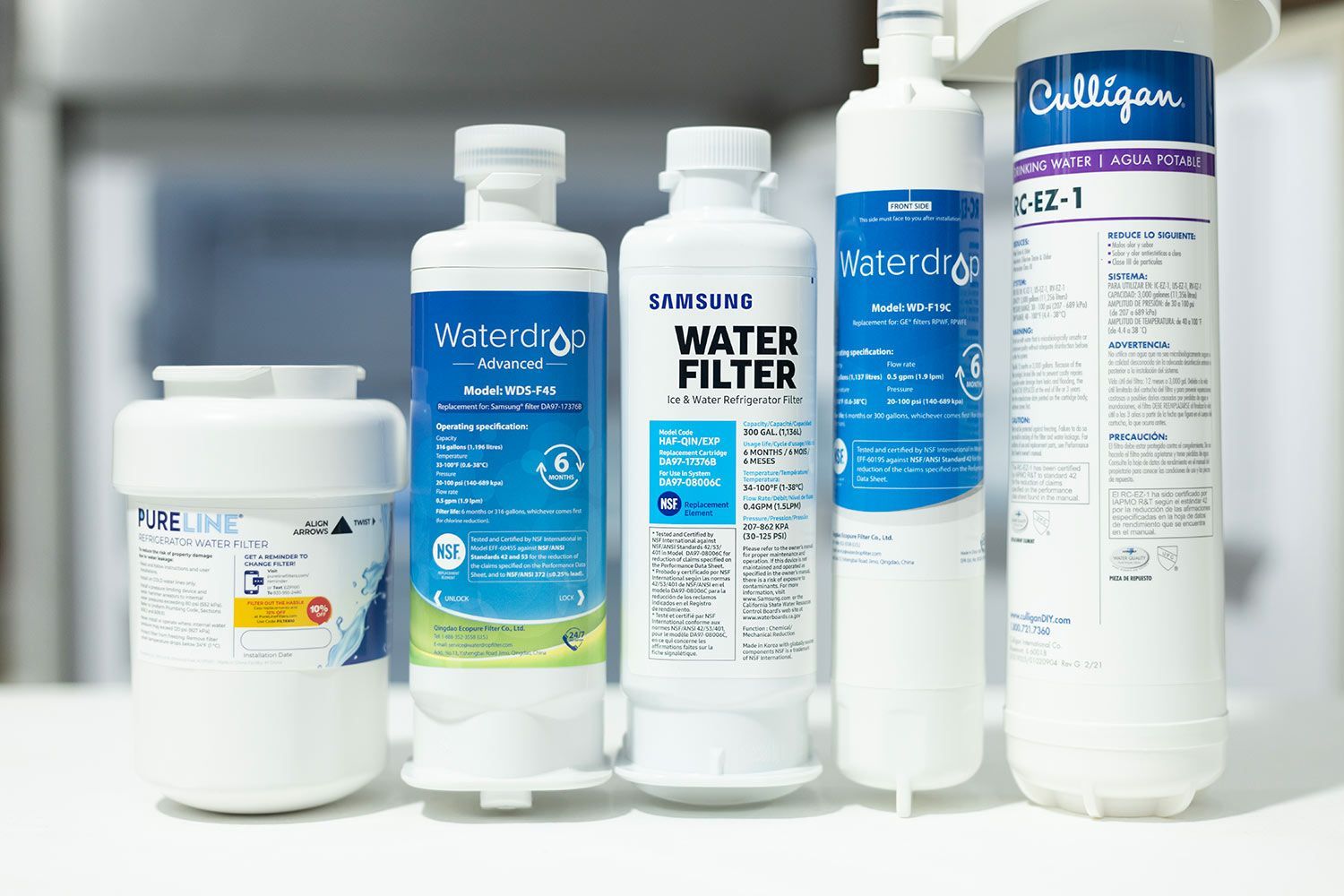
1. **Refrigerator Water Filters**
It may seem like your refrigerator’s water filter is getting rinsed with every use, maintaining its pristine condition, but that’s a common misconception that can lead to unhealthy consequences. Far from staying clean, these filters can actually become a major breeding ground for bacteria if not changed frequently enough, directly impacting the safety and quality of your drinking water.
The filter on your refrigerator doesn’t just affect the water you drink; it also affects the quality of the ice it’s making, as Jennifer Rodriguez, chief hygiene officer at Pro Housekeepers, explains. This means every sip of water or ice cube you use could be introducing contaminants rather than removing them, if your filter has passed its prime. Filters keep your drinking water clean from contaminants and impurities; to make sure they keep doing that job well, these filters need to be replaced regularly.
The good news is that staying on top of this replacement is straightforward. Jennifer Rodriguez recommends replacing refrigerator water filters every six to eight months. Additionally, Whirlpool, for example, recommends changing the filter on its built-in water dispensers every six months. If you’re not sure about your specific filter’s replacement schedule, a quick check of your owner’s manual will provide the precise guidelines needed to ensure your water remains fresh and clean.
Read more about: Honestly, What Happened? 15 Once-Beloved American Foods That Vanished from Our Tables
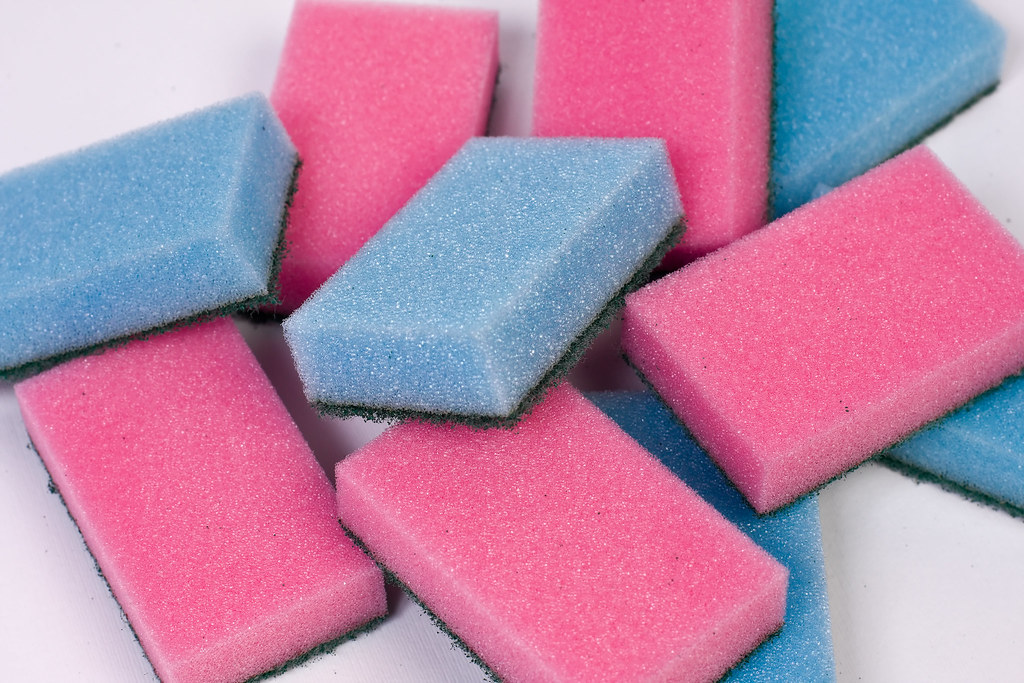
2. **Kitchen Sponges**
The humble kitchen sponge, an everyday hero in our cleaning routines, is unfortunately also one of the worst culprits for harboring germs. Sponges are prone to bacteria growth due to their porous structure and frequent contact with contaminants, as highlighted by Robin Murphy, cleaning expert and founder of residential cleaning service ChirpChirp. This constant exposure to food particles and moisture creates an ideal environment for harmful microorganisms to flourish.
If you’re considering simply cleaning your sponges instead of replacing them, think again. A 2017 study published in Scientific Reports reveals that microwaving sponges didn’t significantly reduce their bacterial load. This means that even after attempts to sanitize them, many harmful bacteria can persist, making the sponge a vector for spreading germs around your kitchen rather than eliminating them. Alex Varela, general manager at Dallas Maids, notes, “The smell is the best sign that they need replacement, but aside from that after a few weeks they also lose absorbing power, so you have to spend more on dishwashing soap and more time scrubbing your dishes and utensils.”
To truly prevent the spread of potentially dangerous germs, frequent replacement is key. Murphy recommends replacing your kitchen sponge every week, but never longer than two weeks. For those looking for a more sustainable option, Alex suggests switching to silicone sponges, which are non-porous and resist bacterial growth, lasting a few months. Whichever you choose, regular replacement is paramount for a hygienic kitchen, opting for washable dish cloths and sponges means you can swap them out every day or two, for more hygienic dishes.
Read more about: Unlock Home Harmony on a Budget: 14 Brilliant Dollar Store Organization Hacks Expert-Approved
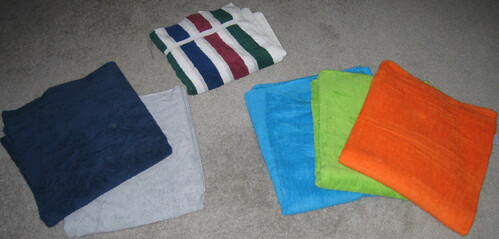
3. **Bath Towels**
That soft, fluffy bath towel you use daily to dry off might be doing more than just absorbing moisture; it could be adding bacteria back onto your clean body. Amy R. Bloomer, founder and owner of Let Your Space Bloom, explains that “Towels harbor E. coli, which are pathogens for humans; they also harbor coliforms, a fecal indicator bacteria, which basically tells you there are feces inside the towel; lastly, they harbor yeast and molds, which could be problems for people with allergies.” This unsettling reality means holding onto bath towels for too long turns them into germ reservoirs.
The warm, moist environment of a bathroom, coupled with repeated skin contact, makes bath towels prime real estate for microbial growth. If you’re not replacing those towels every two or three years, it’s probably the latter scenario, where you’re just adding bacteria to your body. Even with regular washing, the cumulative buildup of bacteria, dead skin cells, and allergens over time can make older towels less hygienic and effective.
To combat this, Bloomer provides actionable advice: wash your towels weekly in hot water, open your bathroom door whenever possible to keep the room dry, and rotate towel sets frequently. Beyond regular washing, the ultimate solution for maintaining a truly hygienic drying experience is to replace your bath towels every two to three years. This ensures that the fibers are not only effective at absorbing water but also free from an undesirable accumulation of microorganisms.
Read more about: Beyond the Flames: 13 Barbecue Myths Pitmasters Want You to Stop Believing for Safer, Tastier Grilling
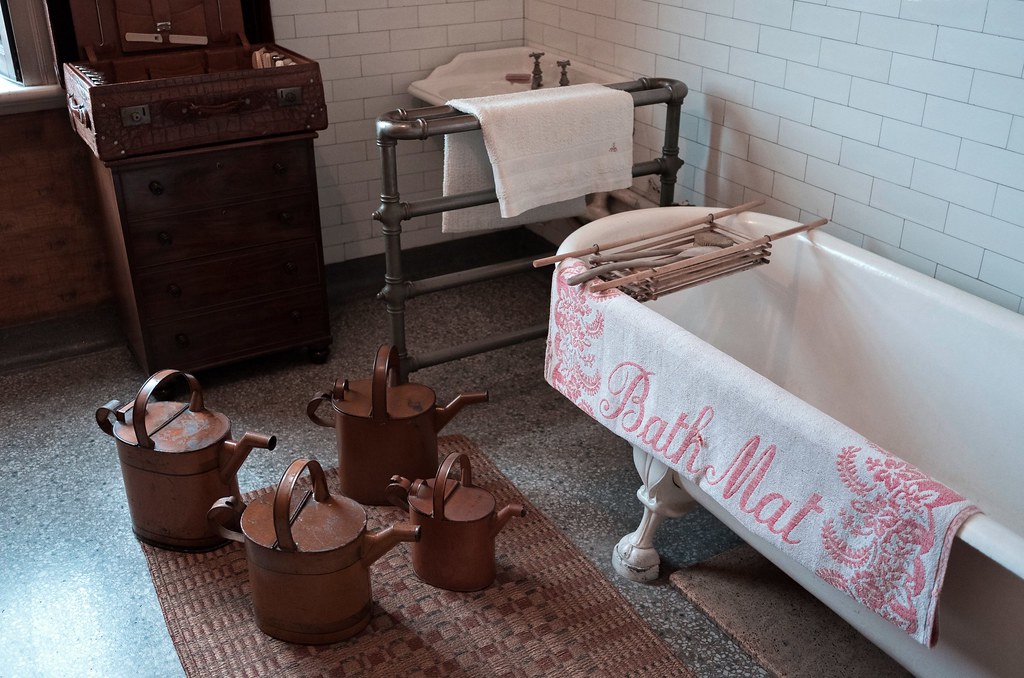
4. **Bath Mats**
Just like bath towels, bath mats are constantly exposed to moisture and germs, creating an ideal breeding ground for unpleasant and potentially harmful organisms. Since they’re typically kept in moist environments and are in frequent contact with germs from your body, hanging on to that bath mat for too long could mean you’re creating a breeding ground for mold and mildew that could even lead to athlete’s foot. This makes them a critical item to monitor for replacement.
The constant dampness and foot traffic make bath mats a prime spot for fungi, yeast, and bacteria to thrive. These organisms can contribute to not only unpleasant odors but also skin infections and allergic reactions for sensitive individuals. Justin Carpenter, owner of Modern Maids, emphasizes the importance of replacement for maintaining a healthy bathroom environment, stating that bath mats should be replaced every two years.
Beyond the two-year replacement cycle, regular cleaning is crucial. Carpenter also recommends washing them regularly between replacements: “This ensures they stay germ free, especially if you have multiple people using the same mat.” By combining regular washing with timely replacement, you can prevent your bath mat from becoming a hidden source of mold, mildew, and other pathogens, safeguarding your family’s health and keeping your bathroom fresh.
Read more about: Purr-fect Harmony: 7 Simple Ways to Deepen Your Bond with Your Feline Friend
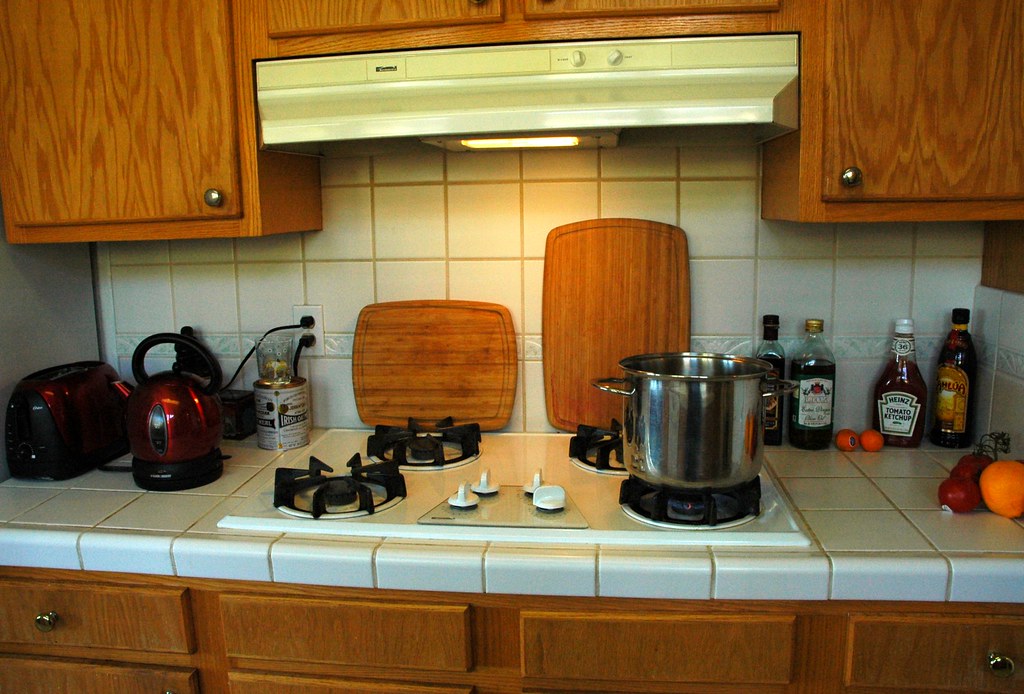
5. **Cutting Boards**
You might believe you invested in a cutting board that can last you forever with proper upkeep, but even the most diligent cleaning can’t negate the eventual need for replacement. Robin Murphy suggests replacing them annually, and there’s a very practical reason behind this recommendation. The truth is, knives create grooves in the board, “which become a breeding ground for bacteria,” and no amount of scrubbing is going to undo that.
These microscopic cuts and crevices, invisible to the eye, offer perfect hideouts for foodborne bacteria like E. coli and Salmonella, even after thorough washing. Over time, these grooves deepen, making it impossible to truly sanitize the surface. The lingering bacteria can fester and hide in those grooves, turning what should be a safe food prep surface into a potential health hazard.
For plastic cutting boards, frequently used ones should be replaced about every two years. You’ll know it’s time for a replacement when a sponge snags on deep cuts or scratches along the board. Our experts say wood cutting boards can have a longer lifespan than plastic options if you care for them properly, but the principle of bacterial accumulation in knife grooves still applies. Regardless of material, if your board shows significant wear and tear, annual replacement or sooner is a wise choice for food safety.
Read more about: Remember These? 14 Classic Cars From the 1980s That Everyone Forgot About (But Are Now Worth a Fortune!)

6. **Wooden Spoons**
Similar to cutting boards, wooden spoons, cherished for their durability and gentle touch on cookware, also have a hidden vulnerability that necessitates regular replacement. Wooden spoons are porous and can retain bacteria if they’re nicked or cracked, absorbing liquids and food particles deep within their structure. This porous nature makes them a potential harbor for microorganisms that can be difficult to eliminate through ordinary washing.
Over time, these utensils can also start to retain odors from the foods you’re cooking, a clear sign that they’re absorbing more than just flavor. Cracks and nicks, which are inevitable with regular use, provide additional havens for bacteria to settle in, making the spoon less hygienic with each use. Unlike non-porous materials, wood can be a challenge to thoroughly disinfect once it shows signs of wear.
While the context doesn’t specify an exact replacement frequency for wooden spoons, the advice for cutting boards provides a good parallel. If your wooden spoons begin to show signs of wear—cracks, nicks, or lingering odors—it’s a strong indicator that they are no longer safe or hygienic for food preparation. Replacing them when these signs appear, ideally within a few years of regular use, is a simple step to maintain kitchen hygiene and prevent cross-contamination.
Read more about: Seriously, What Happened? 12 Once-Beloved Foods Americans Just Don’t Eat Anymore (And Why We Kinda Miss ‘Em)
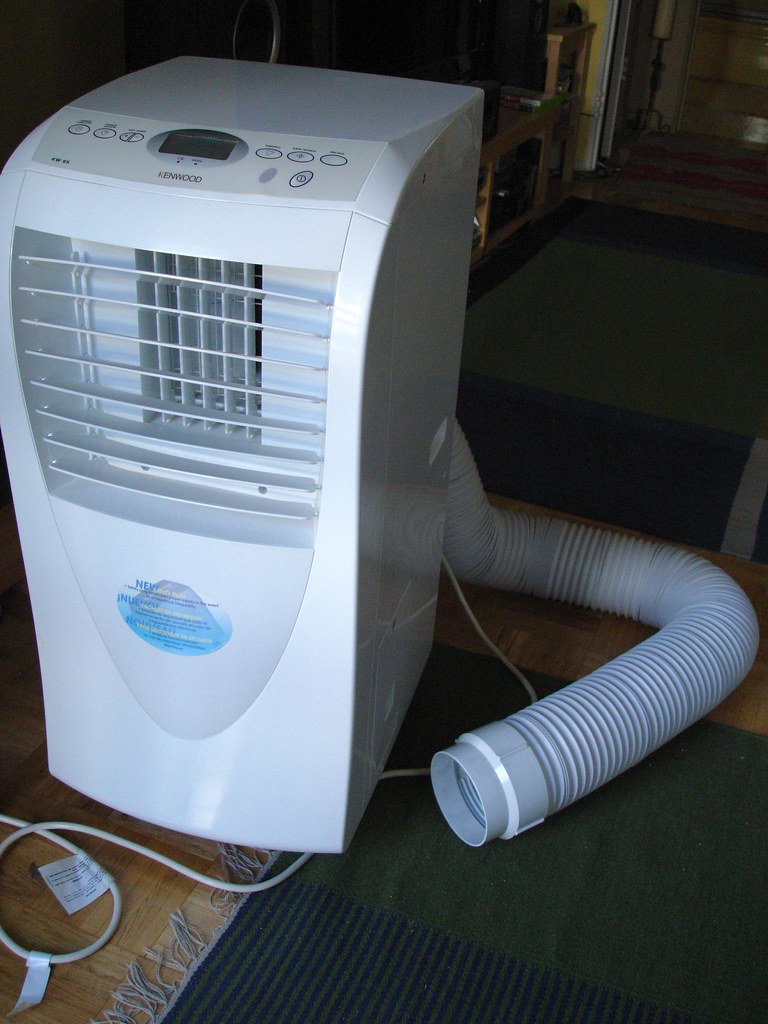
7. **Air Conditioner Filters**
Your air conditioner filter is silently working hard to keep dirt and other debris from entering your home, acting as a crucial barrier against airborne contaminants. However, if you’re not changing it frequently, it’s simply adding those contaminants back into your household air, undermining its very purpose. A clogged filter can make your heating system work harder, increase energy consumption by up to 15%, and reduce your system’s lifespan by years.
Beyond the health implications of recirculating dust and allergens, a dirty filter also takes a toll on your AC unit itself. Marla Mock, VP of operations at Aire Serv, a Neighborly Company, explains that “Dirt in the filter shortens the life of your air conditioner because dirt pulls into the inner workings of the unit.” She also notes that a dirty filter can cause an increase in your electric bill, making regular replacement a smart choice for both your health and your wallet.
The recommended schedule for replacement is fairly consistent. Mock suggests replacing AC filters once every three months to play things safe. Cara Palmer, founder of OrganizeEveryRoom, reinforces this, stating HVAC air filters should be replaced “every 60-90 days, or monthly for homes with pets or allergies.” It’s always worth having a spare set of air filters in a drawer, and checking your HVAC system’s make and model or the manufacturer manual for details on which filters you can use in your appliance. These filters should last for three-month cycles, meaning that you need to replace them about four times a year.
Continuing our essential guide, we’re ready to illuminate the next eight household staples you absolutely need to refresh regularly. We’ll dive deep into the lifespans and potential hazards of often-overlooked items, ensuring your living space remains not just tidy, but truly clean, safe, and comfortable. Prepare to empower yourself with practical solutions and expert tips that will revolutionize your approach to home maintenance!
Read more about: The Savvy Driver’s Guide: 11 Common Car Repairs Mechanics Recommend That You Likely Don’t Need
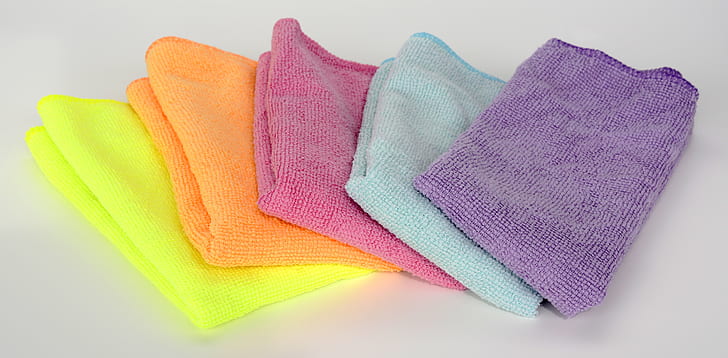
8. **Cleaning Rags**
It might seem counterintuitive, but the very tools you use to get your house sparkling clean can actually become sources of grime themselves if not managed properly. Those trusty cleaning rags, while essential for wiping down surfaces and tackling spills, are far from germ-free after just one use. They absorb dirt, bacteria, and moisture, quickly turning into a breeding ground for microorganisms rather than a tool for their elimination.
Justin Carpenter, owner of Modern Maids, offers a straightforward, actionable solution to this problem. He suggests using rags only once before throwing them into the laundry machine, rather than allowing them to remain damp and festering under your sink or tucked away in a closet. This simple habit drastically reduces the spread of bacteria throughout your home, ensuring that your cleaning efforts are genuinely effective. Beyond immediate washing, Carpenter also advises a complete replacement of cleaning rags every two years.
This regular replacement isn’t just about hygiene; it also contributes to better cleaning performance. As Carpenter explains, “the new cloths will absorb more solution and allow you to finish your tasks in a reasonable amount of time.” When fibers become worn or clogged, rags lose their absorbency, making you use more cleaning product and exert more effort to achieve the same results. By adhering to a two-year replacement schedule and washing rags after each use, you ensure your cleaning arsenal is always at its peak, providing efficient and hygienic results.
Read more about: 15 Car Wash Practices and Pitfalls That Secretly Damage Your Vehicle’s Paint Finish

9. **Pillowcases**
Your pillowcase, where you rest your head for hours each night, can silently become a haven for unseen invaders. Dust mites are a particular concern for pillowcases, thriving in the warm, moist environment created by your body heat and natural skin oils. These microscopic creatures, along with dead skin cells and bacteria, accumulate rapidly, potentially contributing to allergies, skin issues, and generally compromising your sleep environment.
To combat this, frequent washing is paramount. Experts recommend washing pillowcases at least once a week to remove accumulated dust mites, allergens, and skin cells. Beyond regular laundering, a proactive replacement strategy is also crucial. Pillowcases should be replaced every few years, as their fibers can degrade and become less effective at maintaining a clean surface, even with consistent washing.
Amy R. Bloomer, founder and owner of Let Your Space Bloom, offers additional preventative measures to further protect your sleeping sanctuary. She recommends using allergy covers underneath your pillowcases, which are specially woven “so even dust mites can’t slip through them.” Furthermore, Bloomer advises against going to bed with wet hair. This simple habit can inadvertently transform your pillowcase into an even more welcoming breeding ground for both dust mites and bacteria, accelerating the need for replacement and regular deep cleaning.
Read more about: Sleep Better, Breathe Easier: A Microbiologist Reveals the Truth About How Often You Should Wash Your Bedding

10. **Pillows**
If you’re still snuggling with the same pillows you’ve had for what feels like forever, it’s high time for an upgrade. While they might seem harmless, pillows are actually ideal environments for a host of undesirable elements that can compromise your health and sleep quality. They become veritable magnets for “bacteria, dust mites, dead skin cells, and a bunch of other nasty things,” as Jennifer Rodriguez, chief hygiene officer at Pro Housekeepers, bluntly states.
Unlike many other items that can be restored through diligent laundering, pillows have a finite lifespan, even with regular washing. Rodriguez emphasizes that despite your best efforts to keep them clean, pillows should be replaced every two years. Over time, pillow fillings break down, losing their supportive qualities and creating more crevices for allergens and microbes to hide. This breakdown also means they can no longer be effectively cleaned or fluffed back to their original hygienic state.
While a two-year replacement cycle is essential, you can certainly extend the freshness in the interim by learning how to deep clean your pillows. Regular cleaning, combined with protective measures like allergy covers and timely replacements, contributes significantly to creating the healthiest sleeping environment possible. Ensuring your pillows are fresh and supportive is a small change with a huge impact on your overall well-being and rest.
Read more about: Rhythms of a Rock Legend: Dave Grohl’s 12 Classic Drum Kits and Signature Styles That Forged His Legacy

11. **Mattresses**
The mattress, often the most significant investment in our bedrooms, is sometimes mistakenly viewed as a lifelong possession. However, just because it comes with a hefty price tag doesn’t mean it’s immune to the need for replacement, especially considering how challenging it is to thoroughly clean. Your mattress accumulates sweat, dead skin cells, dust mites, and their droppings over its lifespan, creating a surprisingly unhygienic environment beneath your sheets.
Donna Atanasova, a cleaning expert with Fantastic Services Australia, provides a clear guideline: “Mattresses need to be changed every five to seven years.” This recommendation is backed by alarming statistics; a study from Amerisleep revealed that the average seven-year-old mattress harbors approximately 16 million colony-forming bacteria, a stark contrast to the mere three million found on a mattress under one year old. This dramatic increase in bacterial load underscores the critical importance of timely replacement for health and hygiene.
While warranties often suggest a longer lifespan, sometimes up to 10 or 15 years, the actual usable life can be shorter due to various factors. Materials like latex tend to be more durable, but lower-density foam mattresses and those with thick Euro- or pillow-tops are susceptible to premature impressions. Your weight and build also play a significant role; heavier sleepers may find that high-density memory-foam or latex mattresses offer better longevity and support.
Even if indentations aren’t deep enough for a warranty claim, they can still disrupt your comfort. New neck, shoulder, or back pain upon waking, or nighttime headaches, are clear signs your mattress needs replacing sooner. Investing in a new mattress is a vital step towards ensuring a clean, supportive, and health-promoting sleep sanctuary.
Read more about: Beyond the Rig: 12 Game-Changing Essentials Long-Haul Truckers Swear By (But Rarely Talk About)

12. **Vacuum Cleaner Filters**
Your vacuum cleaner is designed to be a dirt and debris magnet, pulling all sorts of unsightly particles up off your floors. But ironically, this essential cleaning appliance can become positively filthy itself, particularly its filters. The filter acts as the frontline defense, capturing dust, dander, and other allergens, preventing them from being recirculated back into your home’s air.
However, a neglected filter can quickly become part of the problem rather than the solution. “If the filter is not changed regularly, it can leak small particles like dust and dander out with the exhaust air,” explains Matt Clayton, founder of Pet Hair Patrol. This means your vacuum, instead of creating a cleaner environment, could actually be blowing irritants and allergens around, exacerbating respiratory issues and diminishing air quality. A dirty filter also makes your vacuum work harder, reducing its efficiency and potentially shortening its lifespan.
To maintain optimal performance and prevent the unintentional recirculation of captured debris, experts advise swapping out your vacuum cleaner filter every three to six months. This routine ensures that your vacuum effectively traps contaminants, contributing to a truly cleaner home rather than just moving dust around. Always check your vacuum’s specific model manual for precise recommendations, as some high-efficiency filters might have slightly different guidelines, but a quarterly or bi-annual change is a solid general rule for a healthier home.
Read more about: Your Ultimate Guide to Smart Home Upgrades: Know When to Invest and When to Economize for a Smarter Home

13. **Toothbrushes**
It’s a common misconception that a toothbrush only needs replacing when its bristles start looking frayed and ragged. But the truth is, long before visible wear and tear, your toothbrush can become a thriving ecosystem for germs, silently compromising your oral hygiene. Most people simply don’t clean their toothbrushes as often or as effectively as they should, leading them to “harbor germs,” as Tom Klimaszewski, a certified infectious disease prevention expert with Bee Line Support, points out.
Beyond the bristles, the entire toothbrush can become contaminated, particularly if stored improperly. Klimaszewski recommends keeping toothbrushes covered or storing them inside a drawer, offering a crucial piece of advice for preventing cross-contamination. He highlights that toilet flushes “can spread microscopic bacteria, including E.coli, up to six feet,” meaning uncovered toothbrushes left on the counter are highly susceptible to airborne pathogens.
To ensure you’re maintaining the best possible oral health and preventing the transfer of bacteria, the Centers for Disease Control and Prevention (CDC) provides a clear guideline. They advise replacing your toothbrush every three months, regardless of how new it might still look. This consistent replacement schedule ensures that you’re always brushing with a hygienic tool, safeguarding your mouth from unwanted bacterial guests and supporting your overall health.
Read more about: 12 Simple Cybersecurity Habits That Can Save Your Family From $10000 in Losses: A Digital Lifeline for Your Loved Ones

14. **Hair Brushes**
Our hair brushes, used daily to detangle and style, are often overlooked when it comes to regular replacement, yet they can have a significant impact on both hair health and hygiene. When hair brushes begin to show signs of wear and tear, such as bent or broken bristles, they can not only cause breakage and damage to your hair but also start harboring an unwelcome collection of bacteria, product buildup, and even mold. This accumulation happens due to constant contact with hair, oils, and styling products.
The replacement timeline for hair brushes varies depending on their material and type. Anna H. Chacon, MD, a board-certified dermatologist, recommends that plastic or rubber hair brushes should be replaced every six to twelve months. Similarly, celebrity hairstylist Michael Sparks advises replacing boar-bristle brushes every six months. These schedules are crucial because worn bristles become less effective, snagging hair and providing ideal nooks for microbial growth.
Furthermore, if you have particularly thick or curly hair, you might find that your brush experiences more stress and wear, necessitating even more frequent replacement. The constant effort required to detangle and style thicker hair textures can quickly degrade bristles and paddle integrity. Regular cleaning between replacements, such as removing trapped hair and washing with soap and water, can help extend a brush’s life, but ultimately, timely replacement is key to preventing damage to your hair and maintaining a hygienic grooming routine.
Read more about: Malcolm X: An Unflinching Chronicle of a Revolutionary Life, From Obscurity to Enduring Legacy (1925-1965)
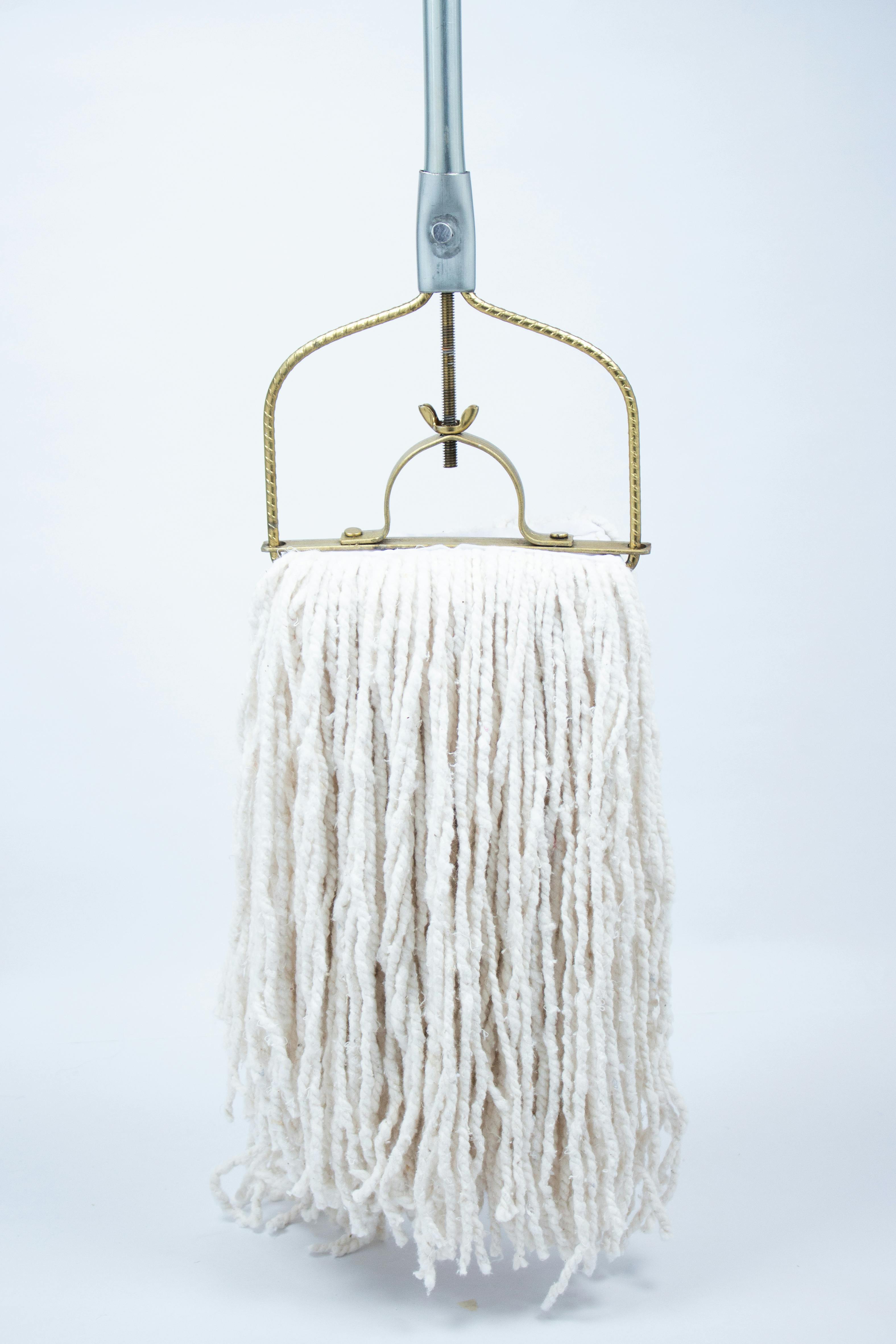
15. **Mop Heads**
When it comes to keeping your floors sparkling clean, the mop is an indispensable tool. However, if you’re not replacing your mop cloth or head often enough, you could inadvertently be making your home dirtier than if you hadn’t mopped at all. A worn-out or excessively used mop head, rather than lifting dirt and germs, simply pushes them around or, worse, deposits old bacteria back onto your supposedly clean surfaces.
Justin Carpenter, owner of Modern Maids, strongly emphasizes the importance of frequent replacement. He explains that “By frequently replacing your mop, you are ensuring that it is doing its job cleaning your space and not becoming a hazard by leaving germs and bacteria behind.” Carpenter specifically recommends replacing mop accessories every other month to maintain optimal hygiene and cleaning effectiveness. This proactive approach prevents the mop from becoming a reservoir for the very contaminants it’s meant to remove.
Beyond Carpenter’s advice, cleaning expert Shari Soloman Cedar offers additional indicators: look for “frayed or broken fibers,” or if it “stops effectively cleaning floors, often leaving streaks or dirt behind.” A less absorbent mop head or one requiring excessive force is also a clear signal. She advises replacement every three to six months, or sooner for frequent use. To prolong its life, avoid leaving a wet mop in its bucket; air dry thoroughly to reduce odors and bacteria.
Read more about: Remember Them? 15 Celebrities Who Are Legit Unrecognizable From 10 Years Ago (And Will Make You Say ‘Wait, What?!’)
Maintaining a clean and healthy home doesn’t have to be a guessing game. By understanding the finite lifespans of these common household items and implementing a proactive replacement schedule, you’re not just tidying up—you’re actively safeguarding your well-being and enhancing the efficiency of your living space. From the air you breathe to the surfaces you touch, every element contributes to your home’s overall health. So, take these expert-backed insights to heart, empower yourself with knowledge, and transform your home into a consistently clean, safe, and comfortable sanctuary for years to come.


:max_bytes(150000):strip_icc()/GettyImages-1161177015-f1de4ba58a6c4f50969d9119d80405a6.jpg)
